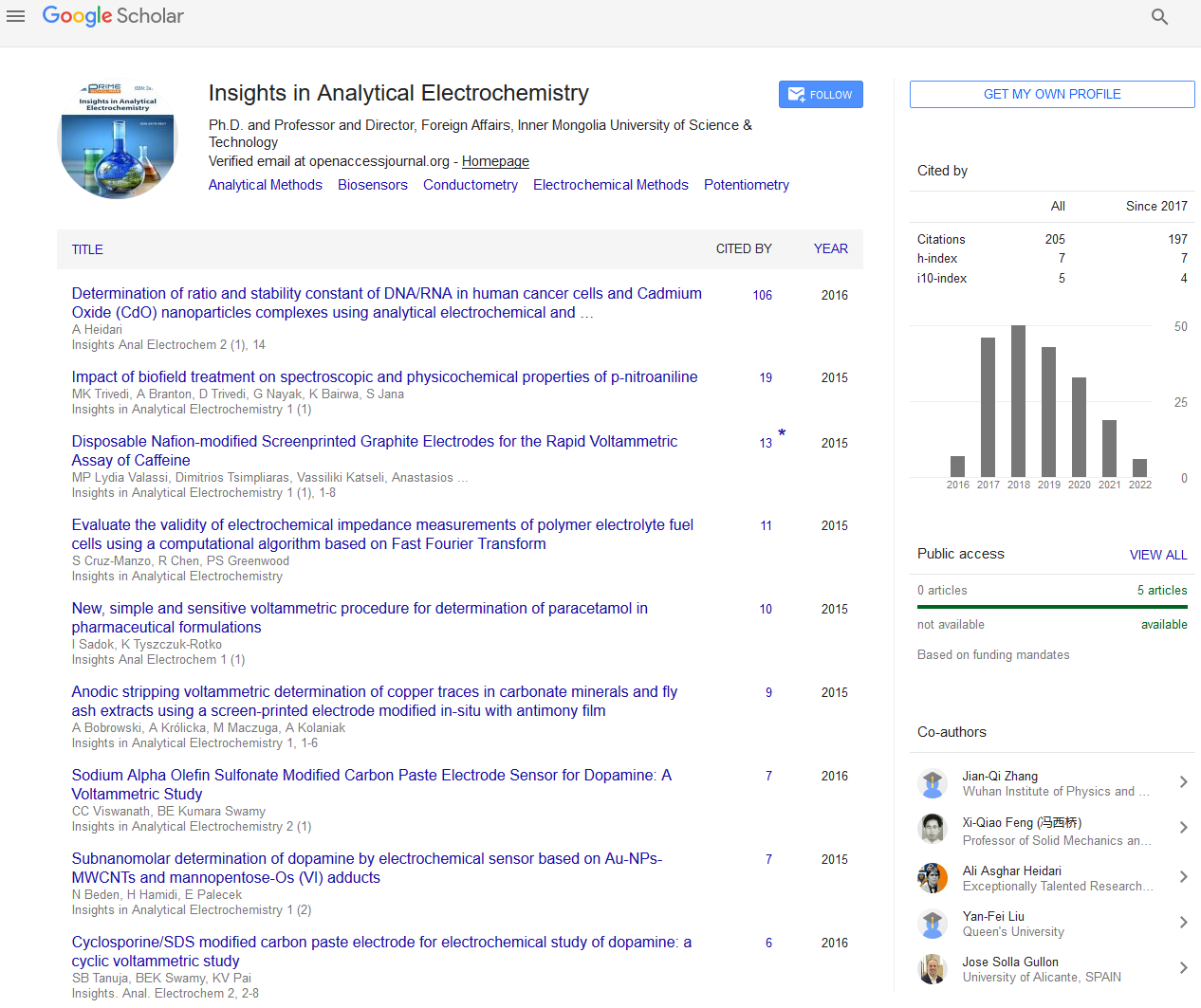Short Commentary - (2022) Volume 8, Issue 3
CHO Cell Technology for CRISPR-Cas13d and Production of Antibody
Southee Tim*
Department of Chemistry, University of Manchester, UK
*Correspondence:
Southee Tim, Department of Chemistry, University of Manchester,
UK,
Email:
Received: 02-May-2022, Manuscript No. ipaei-22- 13616;
Editor assigned: 04-May-2022, Pre QC No. ipaei -22- 13616 (PQ);
Reviewed: 18-May-2022, QC No. ipaei -22- 13616;
Revised: 23-May-2022, Manuscript No. ipaei -22- 13616 (R);
Published:
30-May-2022, DOI: 10.21767/ 2470-9867- 8.3.15
Introduction
Chinese Hamster Ovary (CHO) cells are the principal cell pro- cessing plant for the creation of biopharmaceuticals like immu- noglobulin G (IgG), yet in CHO cells, lactate amassing and cell passing disable IgG creation, fucosyl. Science debilitates immu- nizer subordinate cell harmfulness (ADCC) debilitating of IgG. To resolve these issues, another quality quieting framework, CRISPR-Cas13d, is utilized to successfully smother endogenous qualities that control lactate creation (LDHA), fucosylation (GFT), and cell passing (DDIT3). In any case, it diminished the aggregation of lactic corrosive and smothered fucosylation of the core. What’s more, the Sleeping Beauty framework was utilized to coordinate the CRISPR-Cas13d module for these three qualities to make a CHO cell stage for IgG creation. The new stage showed synchronous knockdown of LDHA, GFT, and DDIT3, creating a lot of IgG with low lactate aggregation, long life expectancy, low fucosylation, and high ADCC strength. Taken together, these information legitimize the capability of CRISPR Cas13d for CHO cell designing and immune response creation upgrade concerning amount and quality. Monoclonal antibodies (mAbs) are the fundamental sort of biopharmaceu- tical anticancer medication. The most clinically utilized mAb is Immunoglobulin G (IgG), whose glycosylation design decides the viability and wellbeing of IgG as an anticancer medication [1].
Description
These glycosylation prerequisites make Chinese hamster ova- ry (CHO) cells the essential cell suspension for IgG creation. Nonetheless, during CHO cell culture and IgG creation, lactic corrosive is delivered and amassed, antagonistically influencing protein creation. Then again, large scale manufacturing of coin- cidentally collapsed or unfurled IgG causes weight on the endo- plasmic reticulum (ER) and in this way incites CHO cell demise. Then again, immune response subordinate cell cytotoxicity (ADCC) is a significant system of counter acting agent interced- ed disease cell eliminating, FcγIIIa on IgG piece crystallization districts (Fc) and insusceptible cells. Requires communication with the receptor. Fucosylation of IgG in the Fc district disrupts connection and disables ADCC action. Be that as it may, recom- binant IgG delivered from CHO cells is profoundly fucosylated. Does eliminating fucose from these oligosaccharides improve ADCC for antibodies like Herceptin? LDHA encodes subunit An of lactate dehydrogenase, which changes over pyruvate to lactate, aggregates lactate alongside CHO cell culture, and decreases the yield of recombinant proteins. Fucosylation re- quires the vehicle of GDP fucose to the Golgi contraption by the GDP fucose carrier (GFT). Harm inciting record 3 (DDIT3) encodes a C/EBP homologous protein, which is actuated by ER stress and causes cell apoptosis. Accordingly, hindrance of endogenous articulation of LDHA, GFT, and DDIT3 might offer new methodologies for upgrading immune response creation in CHO cells. CRISPR is the prokaryotic normal insusceptible framework that safeguards against attacking nucleic acids and is reused for DNA and RNA altering [2].
Type II CRISPR framework involving Cas9 and guide RNA (gRNA) has been utilized to target sequencespecific DNA for genome designing in CHO cells. As of late, type VI CRISPR framework in- cluding such effectors as Cas13a, Cas13b and Cas13d was like- wise found. These effectors coordinate with the single CRISPR RNA (crRNA) to target explicit single abandoned RNA (ssRNA) for cleavage and have been tackled for quality knockdown [3-4].
Conclusion
Among these effectors, Cas13d from Ruminococcus flavefa- ciens strain XPD3002 is the best for quality quieting and can handle crRNA and ssRNA. Cas13d ties to antecedent crRNA re- cords and severs them to create mature crRNA made out of a 5’ direct rehash and a spacer that objectives the ssRNA. Cas13d ties to crRNA and explicitly ties to ssRNA in a spacer-correlative arrangement, bringing about Cas13d-intervened ssRNA cleav- age. Ectopic co-articulation of mature crRNA (called gRNA) designed with Cas13d thumps down target mRNAs with high productivity and explicitness without critical off-target impacts in HEK293 cells. As of late, quality downregulation intervened by CRISPR-Cas13d has been utilized to control the destiny of nerve cells, manage liver digestion, and forestall angiogenesis in mice.
Acknowledgement
None.
Conflict of Interest
The author declares there is no conflict of interest in publishing this article.
REFERENCES
- Fryer CJ, Lamar E, Turbachova I, Kintner C, Jones KA (2002) Mastermind mediates chromatin-specific transcription and turnover of the Notch enhancer complex. Genes Dev 16 (11): 1397-1411.
[Crossref] [Google Scholar]
- Arias AM, Zecchini V, Brennan K (2002) CSL-independent Notch signalling: A checkpoint in cell fate decisions during development? Curr Opin Genet Dev 12(5): 524-533.
[Crossref] [Google Scholar]
- Maekawa, Y, Tsukumo S, Chiba S, Hirai H, Hayashi Y, et al. (2003) Delta1-Notch3 interactions bias the functional differentiation of activated CD4 T cells. Immunity 19(4): 549-559.
[Crossref] [Google Scholar]
- Eagar TN, Tang Q, Wolfe M, He Y, Pear WS, et al. (2004). Notch 1 signaling regulates peripheral T cell activation. Immunity 20 (4): 407-404.
[Crossref] [Google Scholar]
Citation: Tim S (2022) CHO Cell Technology for CRISPR-Cas13d and Production of Antibody. Insights Anal Electrochem.8:15
Copyright: ©Tim S. Thisis an open-access article distributed under the terms of the Creative Commons Attribution License,which
permits unrestricted use, distribution, and reproduction in any medium, provided the original author and source are credited.

